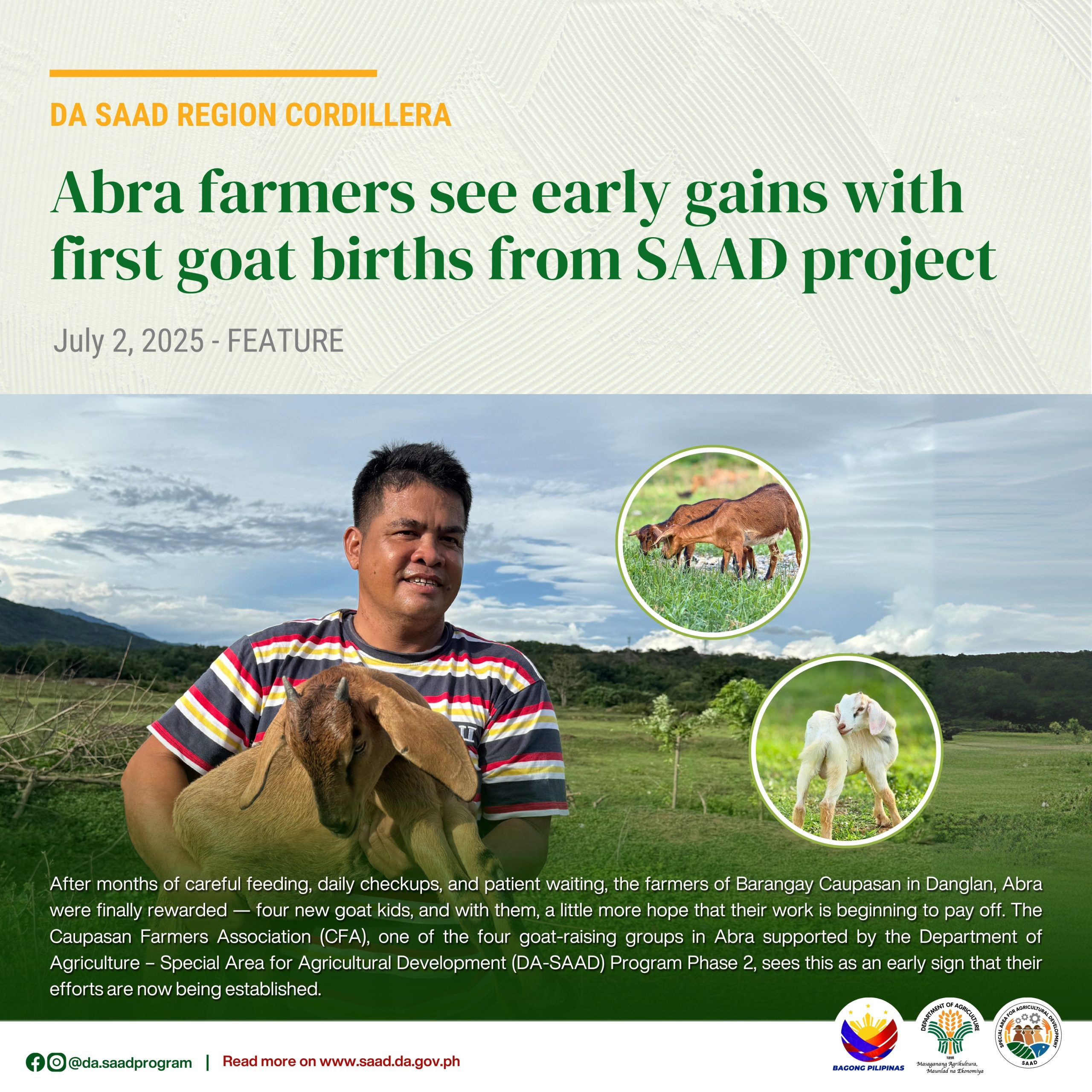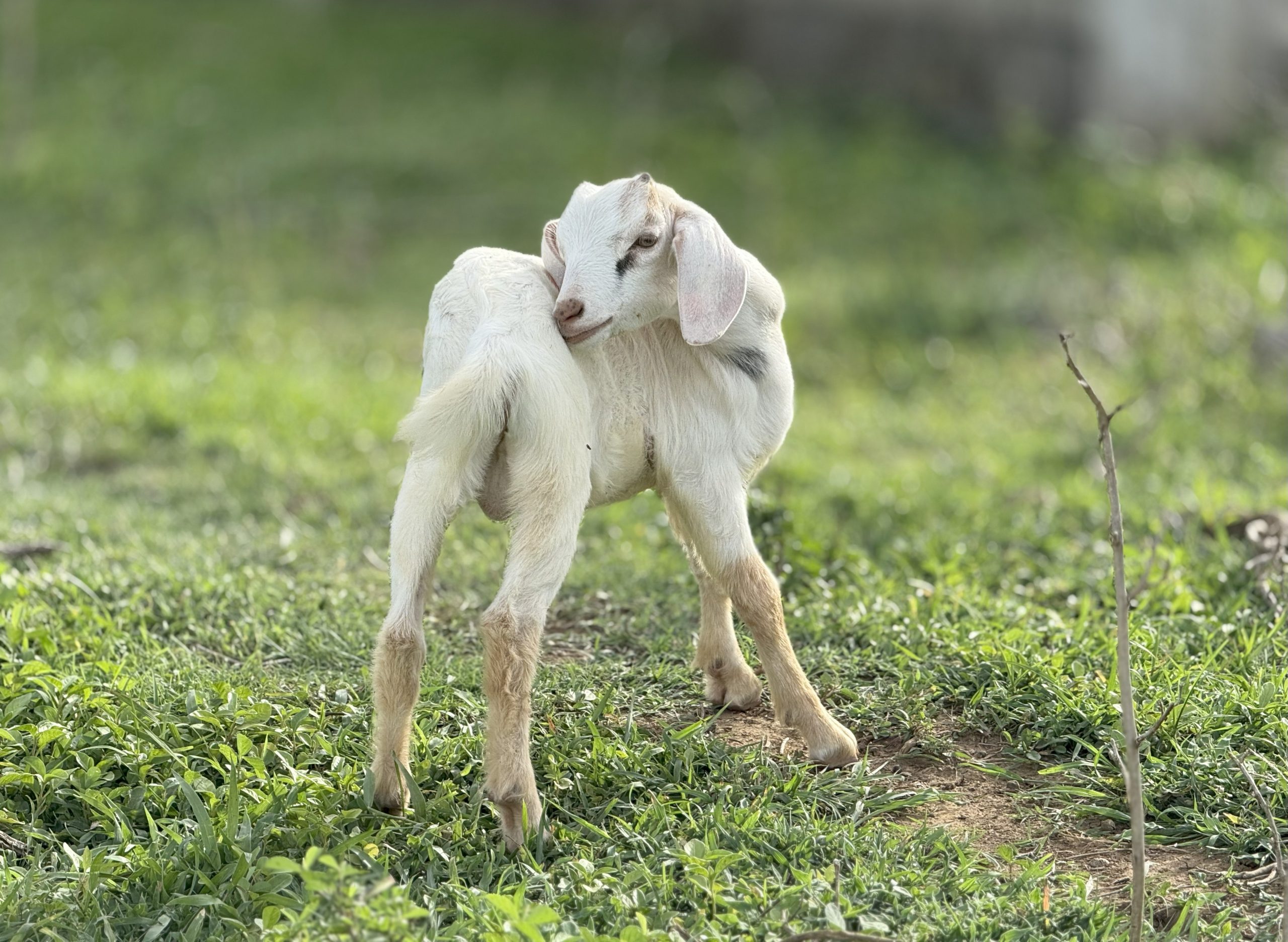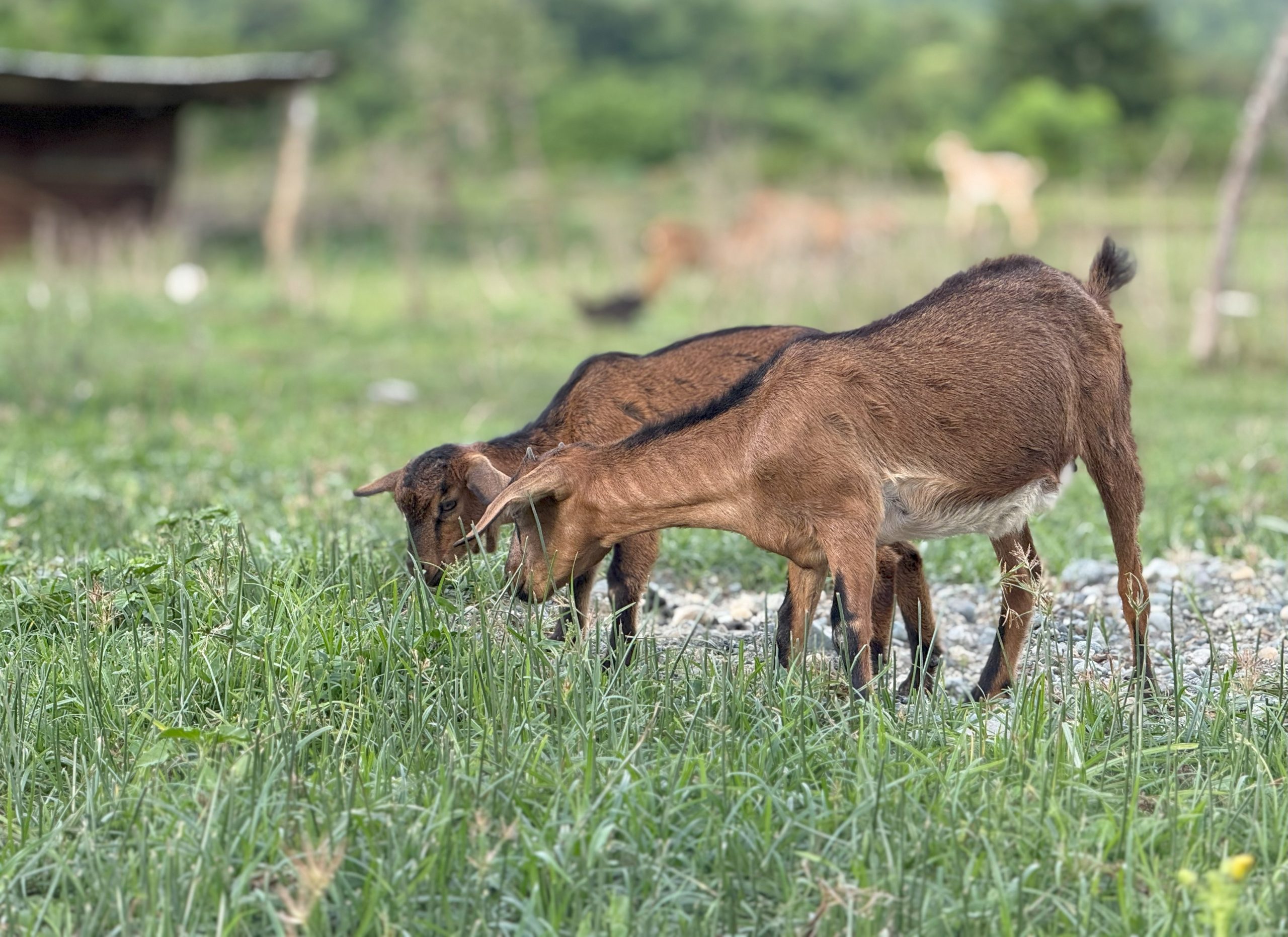After months of careful feeding, daily checkups, and patient waiting, the farmers of Barangay Caupasan in Danglan, Abra were finally rewarded — four new goat kids, and with them, a little more hope that their work is beginning to pay off.
The Caupasan Farmers Association (CFA), one of the four goat-raising groups in Abra supported by the Department of Agriculture – Special Area for Agricultural Development (DA-SAAD) Program Phase 2, sees this as an early sign that their efforts are now being established.
Goat farming has long been a part of upland life in the province, especially among Indigenous and smallholder communities. Goats not only provide meat and milk, but also income and organic fertilizer. Yet despite this potential, farmers face familiar challenges — limited access to forage, veterinary care, and capital — made even harder by erratic weather patterns.
To help bridge these gaps, DA-SAAD in the Cordillera Administrative Region (CAR) rolled out a goat production project to CFA and three other associations in Nagaparan, Sulbec, and Langbaban in August 2024.
The project provided 11 native does and one buck per group, along with pellet feeds, mineral blocks, napier grass cuttings, dewormers, and construction materials for goat housing. These were delivered in mid August last year, after community validation and planning sessions with the farmer groups.
For the CFA, the arrival of the goats marked the beginning of a new responsibility. Farmers took turns feeding the animals, checking their health, and monitoring pregnancies. In September of the same year, 30 members underwent hands-on training on goat production and silage making at the Municipal Agriculture Office in Danglan. Topics included pasture management, breeding, and animal health care — knowledge that has since guided their day-to-day work.
Their first breakthrough came earlier this year. Four healthy goat kids were born in Caupasan, and another doe is expected to give birth by July. For a group that had only recently started, this small success means a lot.
“Idi inmuna mi a makita dagijay kaian-anak nga kalding ket maragragsakan kami. Kasla marikna mi nga ada pagbanagan na daytoy nu ian-anus mi pay,” shared Lyndon D. Franco, one of the members of the CFA.
(When we saw the first kids born, we were overjoyed. It feels like the project has a future, if we just keep going.)
The farmers know there’s still a long way ahead. Goats require time to grow and multiply, and market opportunities will come gradually. But the early signs have already sparked conversations about expansion. With steady breeding, they hope to supply goat meat and dairy to nearby markets in Bangued and Bucay.
According to Analine G. Liccud, SAAD Food Production and Livelihood Associate Project Officer for Abra, this progress is a strong start.
“This is a stepping stone,” she said. “With proper monitoring and commitment from the associations, we see the potential for them to grow into independent producers that can sustain their operations beyond the program.”
The local government of Danglan has also committed its support behind the project. Through the Municipal Agriculture Office, regular veterinary services and forage assistance are being extended to help the farmers maintain healthy herds and plan for long-term sustainability.
Each goat birth may seem small in number, but for the farmers of Caupasan, it carries weight. It affirms that with the right support and determination, even remote communities can build pathways to self-reliance.
They may not yet be where they want to be, but with each new kid, each feeding, and each sunrise on the mountain slopes of Abra, they are getting closer. ###


